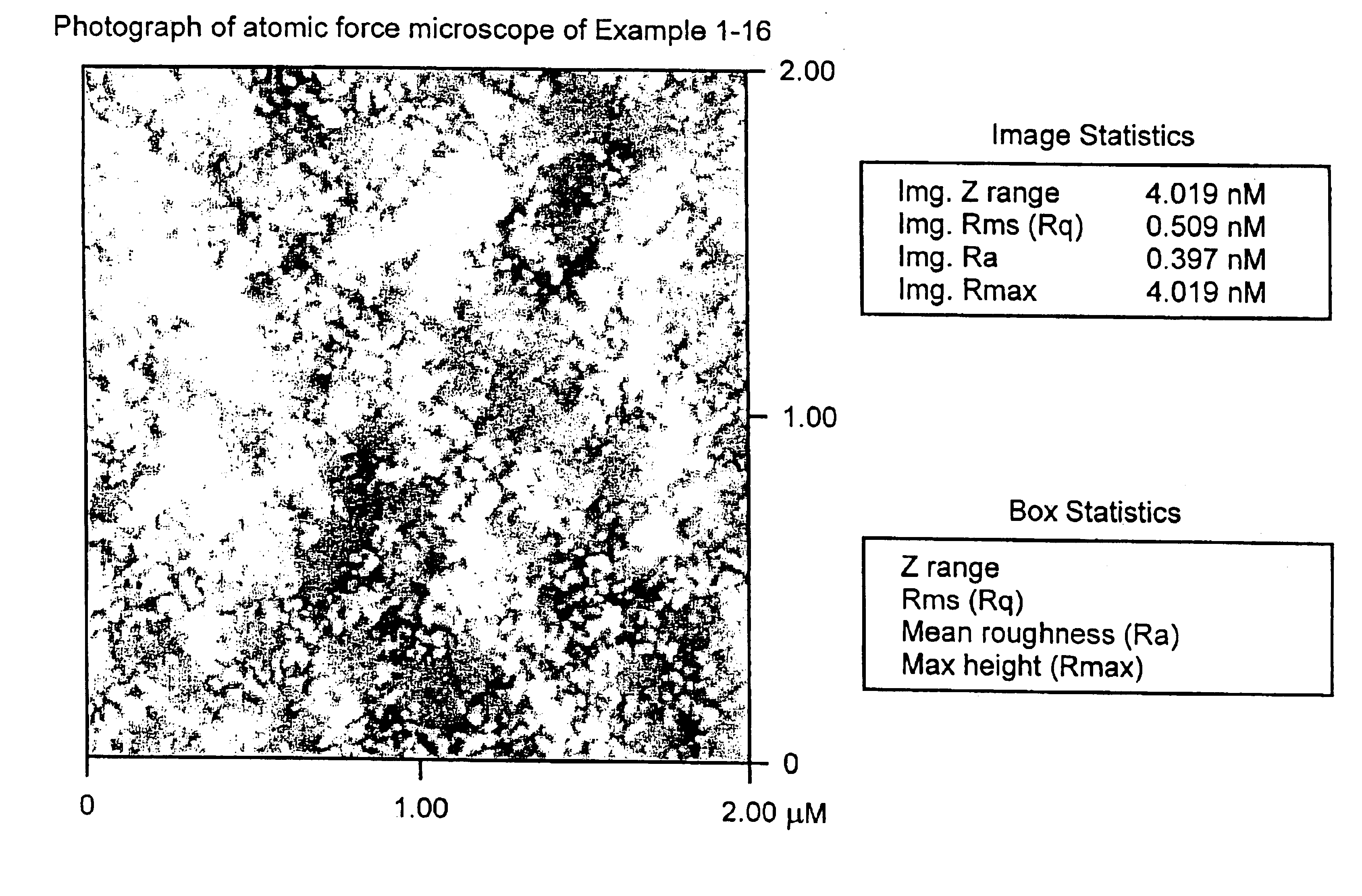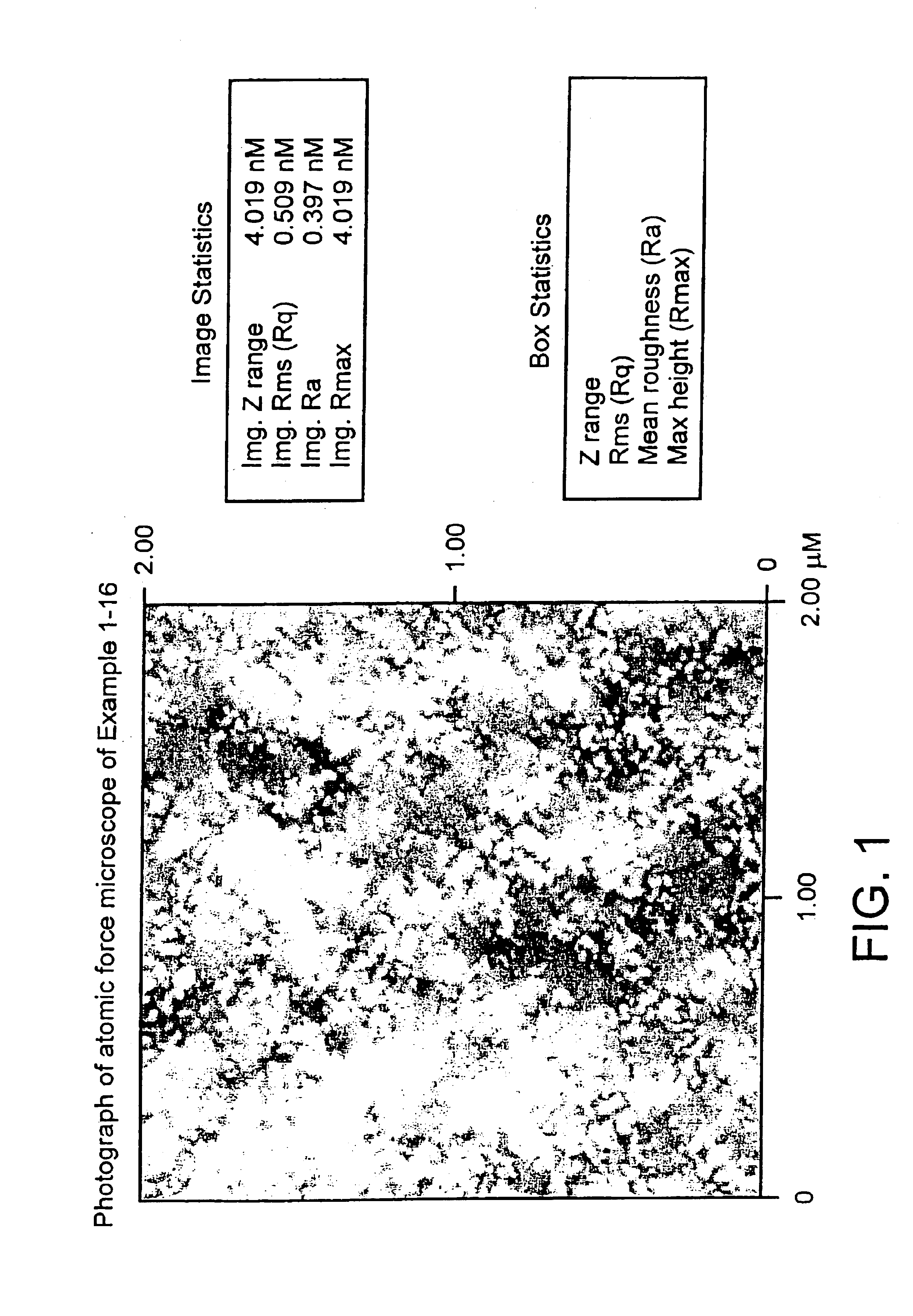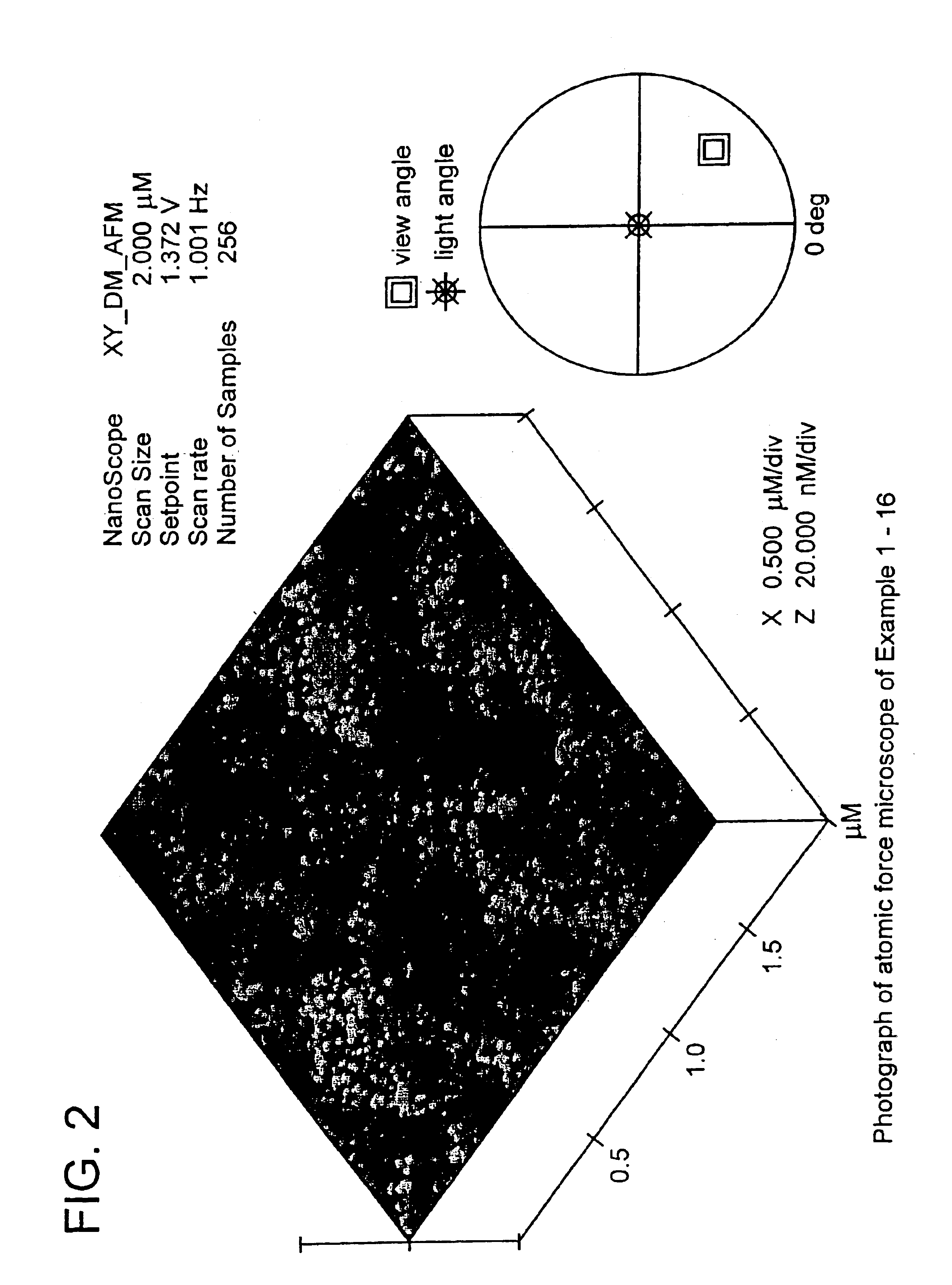Crystalized glass for information recording medium, crystallized glass substrate, and information recording medium using the crystallized glass substrate
- Summary
- Abstract
- Description
- Claims
- Application Information
AI Technical Summary
Benefits of technology
Problems solved by technology
Method used
Image
Examples
first embodiment
[Crystallized Glass]
[0035]Each component constituting a glass for a crystallized glass (First Embodiment) constituting a substrate for information recording medium is described below.
[0036]SiO2 is a glass material having a meshed structure and also serves as a structural component for, as major deposited crystals, a quasi-stable quartz solid solution such as 2MgO.2Al2O3.5SiO2, MgO.Al2O3.3SiO2, and MgO.Al2O3.4SiO2 and an enstatite having a component of MgO.SiO2 and enstatite solid solution with components of (Mg.Al)SiO3. Where SiO2 is contained in an amount less than 35%, the melting glass becomes so unstable, thereby making molding at a high temperature hard and crystal depositions difficult. Furthermore, where SiO2 is contained in an amount less than 35%, the residual glass matrix phase may suffer from impaired chemical resistance, and the glass tends to suffer from a worse heat resistance. On the other hand, where SiO2 is contained in an amount more than 65%, the quasi-stable quar...
second embodiment
[Crystallized Glass]
[0045]Each component constituting a glass for the invented crystallized glass (Second Embodiment) is described below.
[0046]SiO2 is a glass material having a meshed structure and also serves as a structural component for, as major deposited crystals, a quasi-stable quartz solid solution such as 2MgO.2Al2O3.5SiO2, MgO.Al2O3.3SiO2, and MgO.Al2O3. 4SiO2 and an enstatite having a component of MgO.SiO2 and enstatite solid solution with components of (Mg.Al)SiO3. Where SiO2 is contained in an amount less than 35%, the melting glass becomes so unstable, thereby making molding at a high temperature hard and crystal depositions difficult. Furthermore, where SiO2 is contained in an amount less than 35%, the residual glass matrix phase may suffer from impaired chemical resistance, and the glass tends to suffer from a worse heat resistance. On the other hand, where SiO2 is contained in an amount more than 65%, the quasi-stable quartz solid solution and the enstatite as the pr...
third embodiment
[Crystallized Glass]
[0056]Each component constituting a glass for the invented crystallized glass (Third Embodiment) is described below.
[0057]SiO2 is a glass material having a meshed structure and also serves as a structural component for, as major deposited crystals, a quasi-stable quartz solid solution such as 2MgO.2Al2O3.5SiO2, MgO.Al2O3.3SiO2, and MgO.Al2O3.4SiO2 and an enstatite having a component of MgO.SiO2 and enstatite solid solution with components of (Mg.Al)SiO3. Where SiO2 is contained in an amount less than 35%, the melting glass becomes so unstable, thereby making molding at a high temperature hard and crystal depositions difficult. Furthermore, where SiO2 is contained in an amount less than 35%, the residual glass matrix phase may suffer from impaired chemical resistance, and the glass tends to suffer from a worse heat resistance. On the other hand, where SiO2 is contained in an amount more than 65%, the quasi-stable quartz solid solution and the enstatite as the prim...
PUM
| Property | Measurement | Unit |
|---|---|---|
| Surface roughness | aaaaa | aaaaa |
| Grain size | aaaaa | aaaaa |
Abstract
Description
Claims
Application Information
 Login to View More
Login to View More - R&D
- Intellectual Property
- Life Sciences
- Materials
- Tech Scout
- Unparalleled Data Quality
- Higher Quality Content
- 60% Fewer Hallucinations
Browse by: Latest US Patents, China's latest patents, Technical Efficacy Thesaurus, Application Domain, Technology Topic, Popular Technical Reports.
© 2025 PatSnap. All rights reserved.Legal|Privacy policy|Modern Slavery Act Transparency Statement|Sitemap|About US| Contact US: help@patsnap.com



